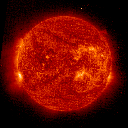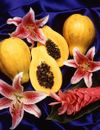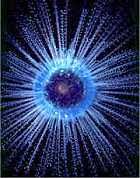
Pee wee, pee wee,
feathers black and white.
Black like nightsky,
white like moonlight.
Memory, or at least my memory, is such an uneven and irregular thing. The word itself seems smooth and curved, like one of those 3D representations of a wormhole in space, but the thing itself is bumpy, fractured, and fractious.
I can remember my blue woollen overcoat, but not the face or name of the young man I lent it to on a cold night in 1972. Was it 1972 or 1971 or 1973? That I can't recall either, but I can still feel the texture not only of the fibres of the coat which, like the man, I never saw again, but also of the herringbone pattern. I remember the room of the flat where I offered it to him, and the name of the street, but almost nothing else that occurred in that apartment, my home for ... how long? I've forgotten.
I have no trouble at all remembering what I had for breakfast this morning, but I have no memory of the tune that was playing as I ate. Ask me what was the first thing I thought when I awoke today, and even yesterday, and there's a good chance I'll know. But what was the last thought I had last night, or the one I had when I made a cuppa tea an hour ago, and I'm stuck.
Yesterday I had to deliver a written message to a shopkeeper, Tom, for a friend of mine who is ill. I did so, but he mentioned that his name is not Tom, but George. So now my friend has permanently ruined George's actual name for me. I would have been OK, but whenever I see George, as I will, I'll be plagued by a dilemma of nomenclature: "Think, Pip! Is he George or Tom? Tom or George?"
Worse, if worse is possible (did
Gerard Manley Hopkins write "no worse -- or
worst -- there is none"? I can't remember, and Google is no help as both versions abound), is that Tom ... I mean George .... will always remember me as the Tom bloke. There's no way he will be able to get that out of his head. I have to go to that shop a bit (he's very friendly, is Tom, so it's no problem), and both minds will repeat the Tom-George loop until kingdom come.
Triggers for memory exhibit a somewhat more ordered and regular nature than bumpy and prickly memory itself. Whenever I see an after-dinner mint, I'm reminded of one particular evening in one particular place, a long time ago. The word 'rake' sets off hilarity in me and my mate Baz le Tuff because of an ancient incident, and don't say "coeliac disease", "Easybeats", "Tamworth" or "dill pickles" if you don't want me to regale you with the same anecdotes everyone who knows me has heard
ad infinitum, indeed,
ad nauseam. I'm getting worse, not better.
A few minutes ago I saw a
pee wee, a common enough black and white native bird about 20 cm in length (its ten dollar name is
Grallina cyanoleuca and the books often call it 'Magpie lark', but I have never heard it called that in my life), and whenever I do so my mind recites the poem I quoted above. I have written poems in recent years that I thought were OK at the time, but I will never remember them again, possibly even when I find them on the back of a table serviette filed in a box of old junk on top of a wardrobe. But the pee wee verse is stuck there like the opening riff of George Harrison's 'What is Life?" which has played on one of my head tapes a zillion times since I was a teenager.
Back to the pee wee, so I can get that bloody riff out of my head again. It was when I was a teenager, about 35 years ago, and I was the gardener for a very nice family in Cheltenham, Sydney. The mum was a lecturer in English and dad was an Aussie NASA physicist who had photos on the wall of him with some of his students: people like Neil Armstrong. He designed a wind/dust measuring device of some kind that he was very upset about at the time because it famously had to be jettisoned from
Apollo 13 to save the lives of the crew in that ailing spaceship.
I wrote quite a lot of children's poetry in those days and I wrote one for Caroline, their seven-year-old daughter. The pee wee one. It's served me well many times since with other people's children, and my own three children and four grandies.
Originally it said "white like starlight". I liked the imagery. However, Caroline, the daughter of two university lecturers, one of them a NASA man, corrected it immediately. "The colour of stars is not white," she said. "Stars have many colours according to the gases they're made of." I already knew that, but it was good to have it pointed out as I hadn't renewed my poet's licence at the time.
In point of actual fact, the pee wee poem is a joint composition, because it was she who suggested that I replace 'star' with 'moon', because "the moon, being solid and not gaseous, reflects a whiter light". The astute reader will immediately see that I could have got her on a fine point of physics there, and don't think it didn't cross my mind.
Hard to believe, but Caroline O'Brien, whom I have not seen for more than 33 years, must be no little girl any more. She's much bigger than seven now and even has all her second teeth -- although I find that my memory is far stronger than my rationality in this regard -- and maybe has grandchildren of her own, like your very fortunate almanackist.























 Hundreds of headline links constantly updating
Hundreds of headline links constantly updating











 [*'Gig' is right, I guess; after all, the Isle of Wight was the scene of one of rock's most famous concerts (
[*'Gig' is right, I guess; after all, the Isle of Wight was the scene of one of rock's most famous concerts (



 And that's one of my favourite smells in the whole world. When life from the sea is fresh, nothing can beat the fragrance, to my mind.
And that's one of my favourite smells in the whole world. When life from the sea is fresh, nothing can beat the fragrance, to my mind.
 seaweed today. Most obviously,
seaweed today. Most obviously,  Web duties have kept me indoors much of the time today, but any possibility of Dame Nature being completely ignored was broken by a flock of Rainbow lorikeets screeching outside, obviously happy with something -- perhaps the few drops of rain that had fallen. They flew past with their customary Boeing speed and planeload-of-whingeing-pommy-immigrants cacophony.
Web duties have kept me indoors much of the time today, but any possibility of Dame Nature being completely ignored was broken by a flock of Rainbow lorikeets screeching outside, obviously happy with something -- perhaps the few drops of rain that had fallen. They flew past with their customary Boeing speed and planeload-of-whingeing-pommy-immigrants cacophony.
 As a matter of fact, Rainbow lorikeets have featured on the
As a matter of fact, Rainbow lorikeets have featured on the  They are of the Australian native species of tree fern (or treefern), Dicksonia antarctica, found in tropical and subtropical areas, including cool to temperate rainforest, and even down in sub-Antarctic islands, hence its name. One of their favourite habitats is cool mountain forests, but they seem well acclimatised here at sea level.
They are of the Australian native species of tree fern (or treefern), Dicksonia antarctica, found in tropical and subtropical areas, including cool to temperate rainforest, and even down in sub-Antarctic islands, hence its name. One of their favourite habitats is cool mountain forests, but they seem well acclimatised here at sea level.
 It doesn't get any busier at Sandy Beach than on a very warm New Year's Day round about 3:30 PM. It's about 26 degrees Celsius, with a very comfortable northerly stroking my body, and the sky wispy with cirrus clouds. There must be up to 30 people on the full length of the beach which is about ... well, I haven't paced it but I suppose about a kilometre.
It doesn't get any busier at Sandy Beach than on a very warm New Year's Day round about 3:30 PM. It's about 26 degrees Celsius, with a very comfortable northerly stroking my body, and the sky wispy with cirrus clouds. There must be up to 30 people on the full length of the beach which is about ... well, I haven't paced it but I suppose about a kilometre.
